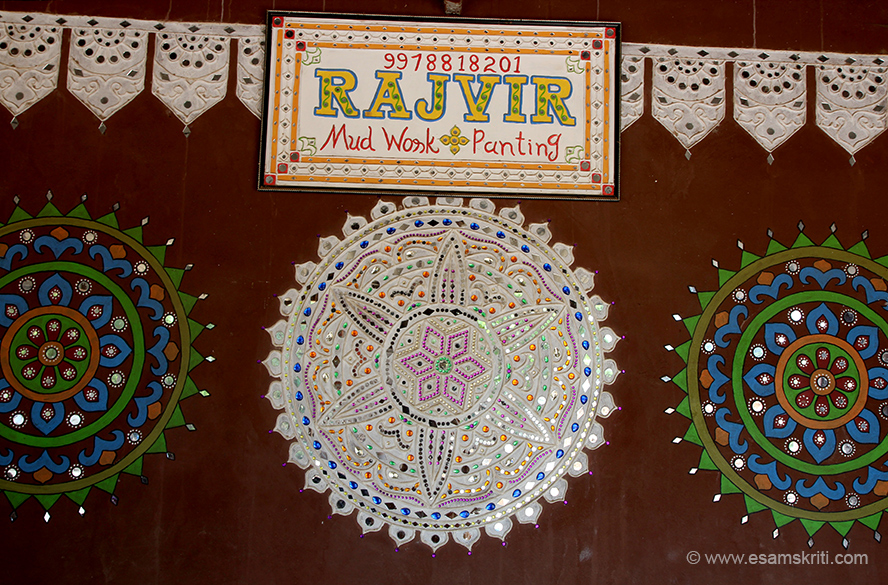

Distortion, volume, keys, tempo, pitch, energy, complexity, and harmonic and melodic content all play a part in determining the colors chosen by chromesthetes and nonchromesthetes. High-energy rock music with prominent drums and fast, loud guitar riffs elicit colors that are predominantly reds, blacks, and other dark colors, as opposed to laid-back, easy-listening music and simple piano melodies that bring out blues, purples, and cool, muted colors. Slower melodic music in a minor key elicits more dark blues to grays. Music with lively tempos in a major key elicit dominate yellow hues that are bright and vivid.

Many nonsynesthetes have music-to-color associations similar to those of chromesthetes. Synesthesia is a part of this cross-modal connections, often the result of unusual connections. Sensory cross-modal connections help the brain integrate and make sense of the constant complex multisensory inputs we experience. Why then do auditory and visual experiences interact with each other? The main reason is that these interactions enable the human brain to make sense of sensory information that corresponds to the same event for example, the ears register the sound of a lightbulb shattering as it hits the floor at the same time as the eyes register the sight of it hitting the floor. Signals from the five senses originate in different anatomical regions of the brain. When synesthesia was first discovered in the 19th century, it was traced back to the eyes until it was discovered that the same phenomenon could be experienced with the eyes closed, confirming a neurological basis. They can also alter how chromesthetes experience colors in response to sound. Levels of concentration, fatigue, emotions, sleep habits, fever, and consumption of caffeine, alcohol, or hallucinogens can contribute to the perception of sound as color. People with chromesthesia have higher creativity and sound memory but at the same time are more likely to have difficulty with numbers. And each individual experiences his or her own unique color connection, which explains why we all do not have Pharrell Williams’s talent. Musicians and those with musical training have more distinct colors for specific notes if they are chromesthetes. Some have chromesthesia with any kind of sound others have it with specific types of sound only. Some individuals with chromesthesia find it to be much more than just perceptual. The same categories of synesthetes who see alphanumerical figures in color exist for those who hear in color: projectors are people who perceive color in the external space and associators are persons who perceive color in their minds. Pharrell Williams views his chromesthesia as an indispensable gift and the secret behind his music, fundamental to his creative processes. Chromesthesia occurs in only about 1 in 3,000 people, including a remarkable number of famous painters and musicians, such as Pharrell Williams (1973-), Leonard Bernstein (1918-1990), Duke Ellington (1899-1974), Vincent Van Gogh (1853-1890), and Wassily Kandinsky (1866-1944), who used Wagner’s Lohengrin to help create wild, crazy lines of color. In chromesthesia, sounds heard automatically and involuntarily evoke color experiences. Synesthesia is a neurological condition in which stimulation of one sense triggers another.

These are symptoms of one specific form of synesthesia-chromesthesia. Or while listening to lower octaves, you saw deep blue, and rapid major chord sequences elicited rapid flashes of colors. Imagine if every time you listened to music in high octaves, you immediately saw pale lavender. The hyena’s crazy – female hyenas have penises! And they laugh all the time – like Puck, they’re the holy fool of the animal kingdom.The Five Senses and Beyond: The Encyclopedia of Perception - Jennifer L. Asked what kind of animal Grimes would be, she said: “A hyena and a beluga. That’s how my synaesthesia plays out.”Īpparently Grimes’ synaesthesia – and this is a bit weird – enables her to “look at a person and see what kind of animal they would be”.

“I have that condition, synaesthesia,” Mary J. When I think of certain songs, I think of vivid reds, oranges or golds.” “When I have a particularly vivid colour, it’s usually a strong melodic, strong rhythmic pattern that emerges at the same time. “When I think of different types of melodies which are slower or softer, I think in terms of blues or greens….” the singer-songwriter explained in author Maureen Seaberg’s book about synesthesia, Tasting the Universe. “It helps me understand songs and what I like.” “People would always ask me how I came up with my music and what it felt like to make music and I would always see colours and then I found out that that was synaesthesia,” the ‘Boom Clap’ singer has said.


 0 kommentar(er)
0 kommentar(er)
